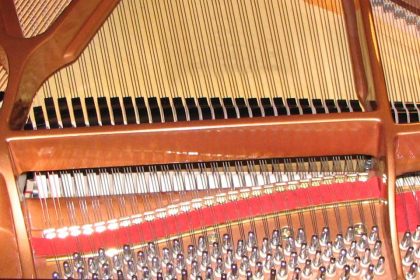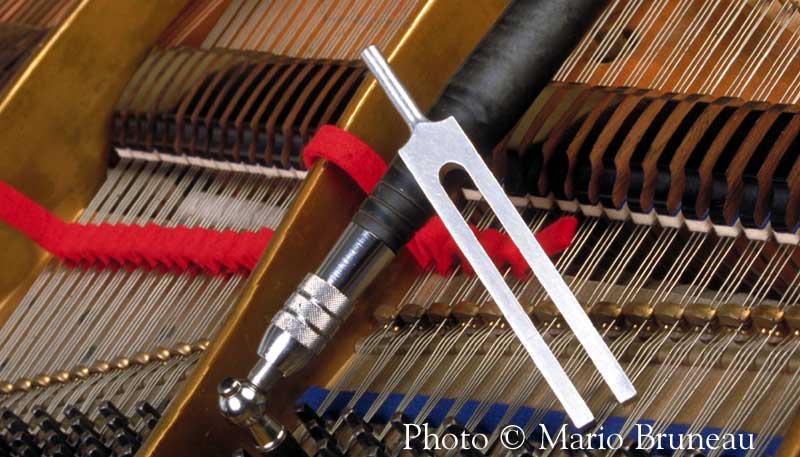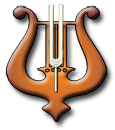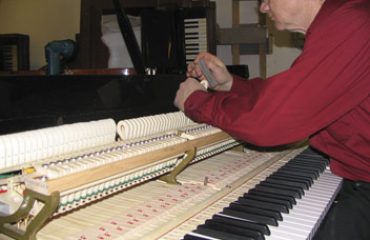
A tuned piano is so much fun to play and even more to listen to. Indeed, in their effort to design the best sounding musical instrument there is, designers base their calculations towards the fact that their musical instrument will perform at its best when tuned to the universal standard that is, the A=440Hz tuning fork. Piano is no exception to this and was designed to give its best sound when tuned to standard. The A=440Hz tuning fork standard is the reference pitch by witch all musical instruments are tuned in order to play together in harmony.
In order for all musical instruments to play in unison and harmony, they are all tuned to the tuning fork standard of A=440Hz (Hz = Hertz, vibrations per seconds) To maintain your piano at the tuning standard and for your personal comfort, you must take care that the humidity percentage in your house is kept between 35% and 60% whenever possible. In Eastern Canada, during the winter season, we must heat our houses which have the effect of lowering substantially the humidity level down to dangerous levels like minus 30%. When loosing its humidity, wood shrinks so the 5 centimeters thickness that the soundboard and maple bridge represent will diminish

thus lowering the the string’s tension. The pitch of your piano gets lowered. On the opposite, during the summer season when the humidity level often reach the 100% in the house, the wood gets thicker and pushes the string’s tension up. Your piano’s pitch rises. Yes, you heard me right! At the end of the summer, your piano will be higher than it was at the beginning exactly like if a piano tuner came to raise the tension of the strings thus raising the pitch.
Because the piano looses more tension in the winter than it gains during the summer, it must be tuned at least once a year. After two years without tuning, chances are your piano will need two tuning anyway to bring its tension back to the tuning standard. This is why in Quebec, we can’t skip one year of tuning to save money because it will need two tunings next year anyway to bring it back to pitch. Also bear in mind that “you will never waste any tuning” thinking that you may have been able to wait an other year or for whatever reason. Your piano’s food is tuning. The more often you get it tuned, the better it will sound and the better will it keep its tuning so in the long run, you will appreciate playing on a piano which is always at its maximum performance. Dare I compare it to your automobile. Wouldn’t you ever skip an oil change and tune-up?
I now live in Magog near Sherbrooke in Quebec’s Eastern Townships but I often go to Montreal to serve my regular clients so don’t hesitate to call me even if you’re in the Montreal area. Obviously, I tune everywhere in the Eastern Townships.
The price for one regular tuning is $140. So, following what was stated earlier, if your piano wasn’t tuned for several years, chances are it will need two tunings to bring it up to A=440 standard pitch so $140 X 2 = $280. Repairs or other mechanical adjustments are not included in the tuning price.
Mario Bruneau
© Copyright – 1997 – All rights reserved



